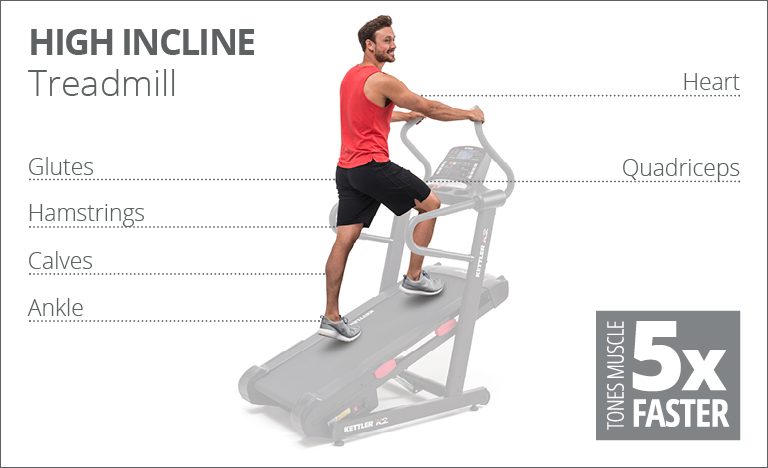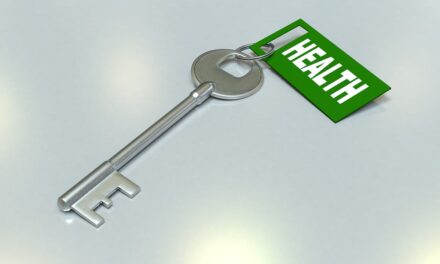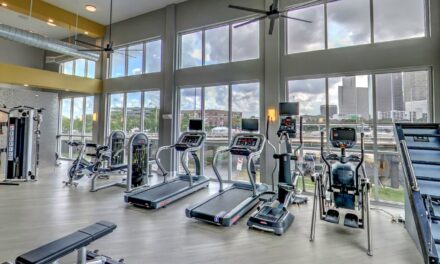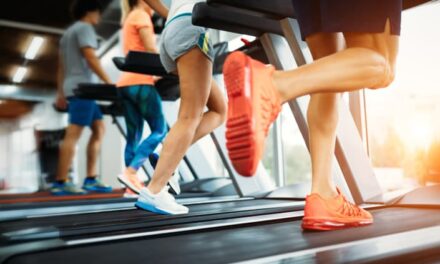Curious about which muscles get a workout when using a treadmill? Look no further! In this article, we will explore the various muscles that are engaged when you step onto a treadmill. Whether you’re a seasoned runner or just starting out on your fitness journey, understanding the impact of this popular exercise machine on your body can provide valuable insights to enhance your workout routine. So, let’s dive into the world of treadmill workouts and discover the muscles that are being targeted with each stride.
Quadriceps
The quadriceps muscles are located at the front of your thighs and are responsible for extending your knees. When you walk or run on a treadmill, your quadriceps are engaged to propel your body forward and maintain your balance. The repetitive motion of using a treadmill can help to strengthen and tone your quadriceps muscles over time. Regular treadmill workouts can lead to increased muscle endurance and improved overall lower body strength.
Exercises to Target the Quadriceps
To specifically target and strengthen your quadriceps muscles, you can incorporate some additional exercises into your treadmill routine. Lunges, squats, and leg presses are all excellent choices for focusing on the quads. By adding these exercises to your workout regimen, you can enhance the effectiveness and efficiency of your treadmill workouts.
Hamstrings
Located at the back of your thighs, the hamstrings are responsible for flexing your knees and extending your hips. Although the primary focus of a treadmill workout is on the quadriceps, the hamstrings are also engaged to a certain extent. When you walk or run, your hamstrings assist in propelling your body forward and provide stability to your lower body.
Exercises to Target the Hamstrings
To ensure that you are adequately targeting your hamstring muscles, you can include exercises like hamstring curls, glute bridges, and deadlifts in your workout routine. These exercises will help to strengthen and tone your hamstrings while complementing your treadmill workouts.
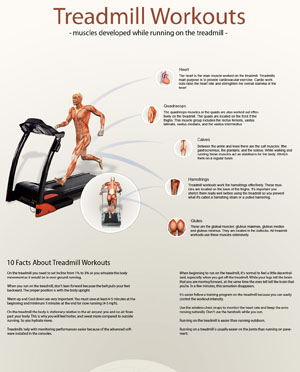
This image is property of www.runreviews.com.
Glutes
The glutes, or the gluteal muscles, are located in your buttocks and are engaged during treadmill workouts. These muscles, including the gluteus maximus, gluteus medius, and gluteus minimus, play a significant role in supporting and stabilizing your body while walking or running on a treadmill. Strong glute muscles are essential for maintaining proper posture and preventing lower back pain.
Exercises to Target the Glutes
In addition to your treadmill workouts, you can incorporate exercises such as squats, lunges, and hip thrusts to target and strengthen your glute muscles. By targeting the glutes both on and off the treadmill, you can achieve a well-rounded lower body workout.
Calves
The calf muscles, comprised of the gastrocnemius and soleus, are engaged during treadmill workouts, particularly when running or jogging. These muscles are responsible for flexing your ankles and propelling your body forward. As you push off with each step, your calves contract, helping you to maintain balance and stability.
Exercises to Target the Calves
To specifically target and strengthen your calf muscles, you can incorporate exercises such as calf raises and toe raises into your workout routine. These exercises can be performed both on and off the treadmill, allowing you to efficiently strengthen your calves.
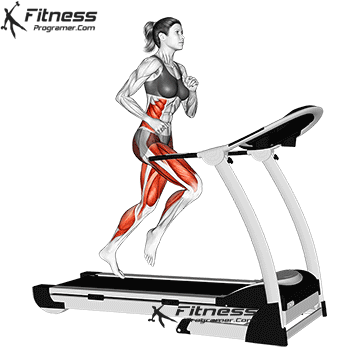
This image is property of fitnessprogramer.com.
Hip Flexors
The hip flexors are a group of muscles located at the front of your hips. These muscles are engaged when you lift your knees during treadmill workouts, helping to bring your legs forward and maintain proper form. The repetitive motion of using a treadmill can help to strengthen and improve the flexibility of your hip flexor muscles.
Exercises to Target the Hip Flexors
To further target and stretch your hip flexor muscles, you can incorporate exercises like lunges, leg raises, and hip flexor stretches into your workout routine. By incorporating these exercises into your fitness regimen, you can ensure the proper strengthening and flexibility of your hip flexor muscles.
Abdominal Muscles
The abdominal muscles, including the rectus abdominis, transverse abdominis, and obliques, play a crucial role in maintaining stability and balance during treadmill workouts. These muscles provide support to your spine and pelvis, helping you to maintain proper posture and prevent strain or injury.
Exercises to Target the Abdominal Muscles
While treadmill workouts engage the abdominal muscles to a certain extent, incorporating additional exercises into your routine can further target and strengthen these muscles. Planks, crunches, and Russian twists are great exercises to include, as they specifically focus on the abdominals and help to improve core strength.

This image is property of fitnessprogramer.com.
Back Muscles
The back muscles, specifically the erector spinae and latissimus dorsi, are engaged during treadmill workouts to maintain proper posture and stability. These muscles help to support your spine and keep your body aligned while walking or running on the treadmill.
Exercises to Target the Back Muscles
To target and strengthen your back muscles, you can include exercises such as rows, lat pulldowns, and back extensions in your workout routine. These exercises will help to improve the strength and endurance of your back muscles, enhancing your overall fitness and treadmill performance.
Shoulders
The shoulder muscles, including the deltoids and rotator cuff muscles, are engaged during treadmill workouts to help maintain balance and proper upper body form. Although the primary focus of a treadmill workout is on the lower body, the shoulders play a crucial role in maintaining overall stability and alignment.
Exercises to Target the Shoulders
To specifically target and strengthen your shoulder muscles, you can incorporate exercises like shoulder presses, lateral raises, and front raises into your workout routine. These exercises will help to enhance the strength and stability of your shoulders, improving your overall performance on the treadmill.
:max_bytes(150000):strip_icc()/quick-and-effective-treadmill-workouts-3866052_final_text-f855c2b476994121bdb5d3d5c7def251.png)
This image is property of www.verywellfit.com.
Arms
While the primary focus of a treadmill workout is on the lower body, the arms are still engaged to a certain extent. The muscles in your arms, including the biceps and triceps, help to maintain balance, support your posture, and control arm movement while you walk or run on the treadmill.
Exercises to Target the Arms
To further target and strengthen your arm muscles, you can include exercises such as bicep curls, tricep dips, and push-ups in your workout routine. By incorporating these exercises into your fitness regimen, you can effectively strengthen and tone your arms while complementing your treadmill workouts.
Cardiovascular System
Using a treadmill is an excellent way to improve cardiovascular fitness. When you walk or run on a treadmill, your heart rate increases, and your cardiovascular system works to deliver oxygen and nutrients to your muscles. Regular treadmill workouts can help to improve the efficiency of your cardiovascular system, increase lung capacity, and enhance overall cardiovascular health.
Benefits for the Cardiovascular System
Regular aerobic exercise, such as treadmill workouts, can help to reduce the risk of cardiovascular diseases such as heart disease and stroke. It also helps to improve circulation, lower blood pressure, and increase the levels of good cholesterol in your body. Treadmill workouts are an effective way to improve your cardiovascular endurance and overall fitness level.
In conclusion, a treadmill workout engages various muscle groups throughout your body. From your quadriceps and hamstrings to your glutes and calves, the repetitive motion of walking or running on a treadmill can help to strengthen and tone these muscles over time. Additionally, your hip flexors, abdominal muscles, back muscles, shoulders, and arms play a role in maintaining balance and stability during treadmill workouts. Finally, using a treadmill can improve your cardiovascular fitness by enhancing the efficiency of your cardiovascular system. Incorporating targeted exercises for each muscle group and maintaining a consistent treadmill routine can lead to improved strength, endurance, and overall fitness.
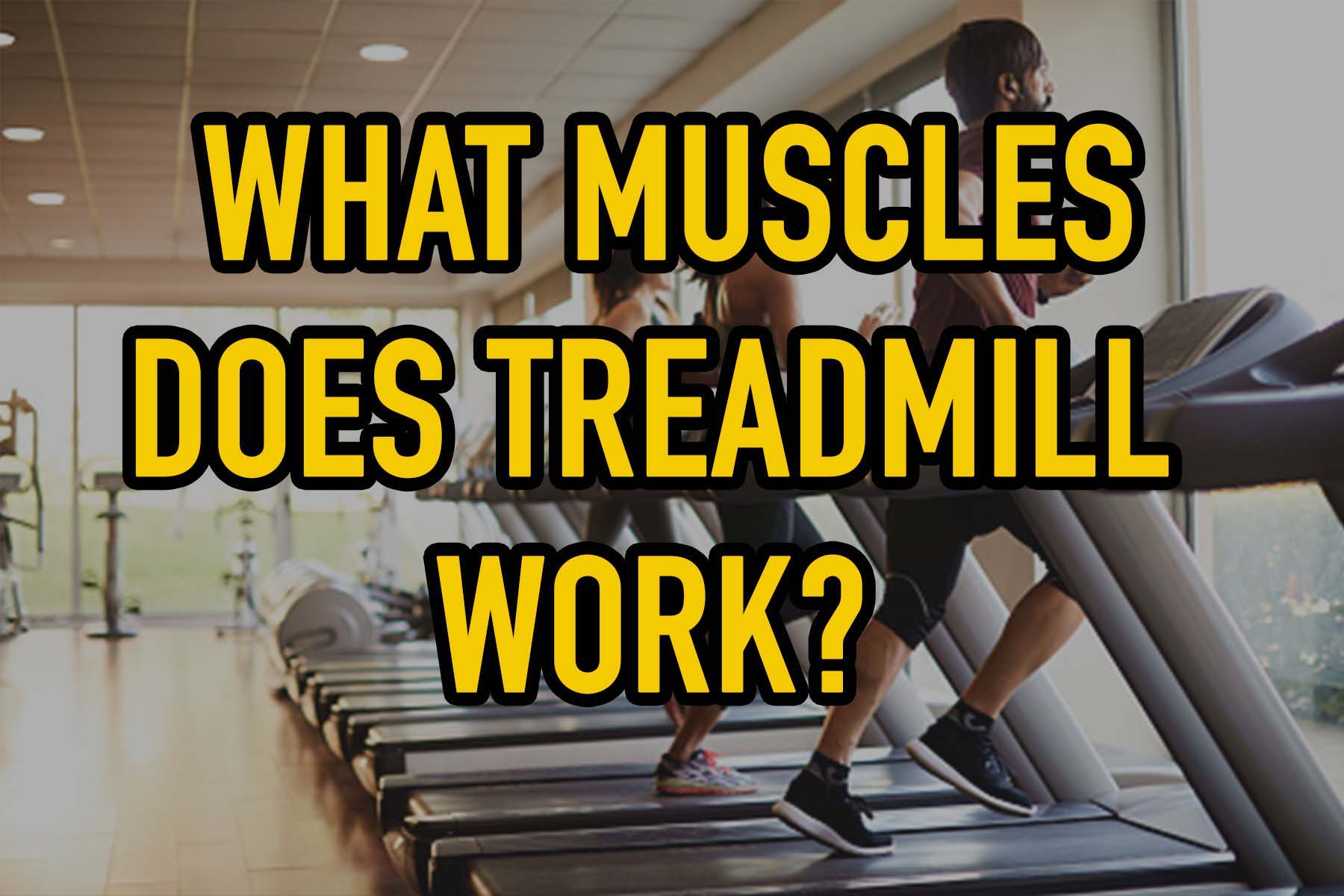
This image is property of ucarecdn.com.

